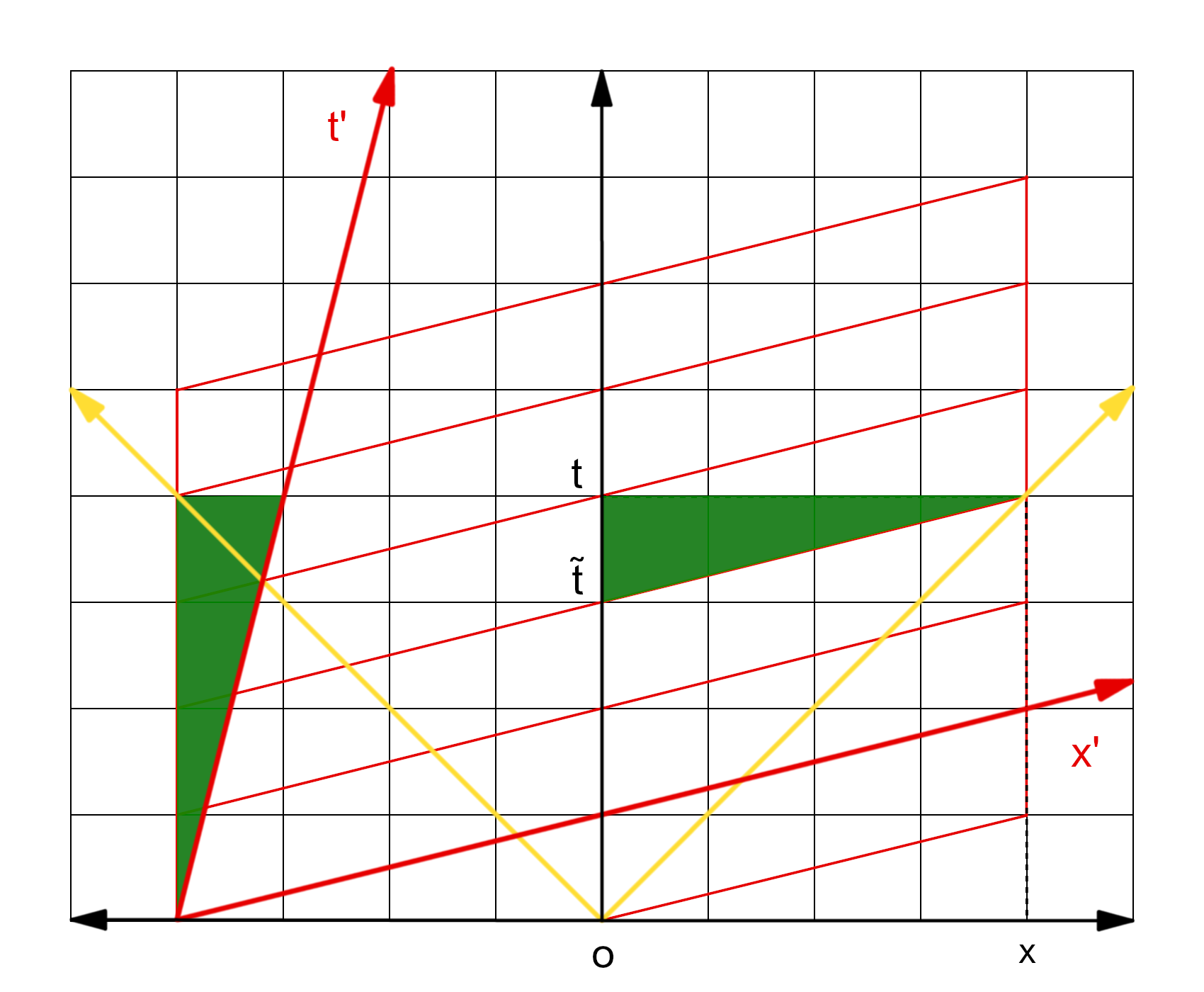Einstein time is a special instance, , of the time coordinate defined in (7.2). Given the facts that secure the consistency conditions of Einstein time, a generalized set of Reichenbach spacetime coordinates , called a Reichenbach chart, may then consistently be defined. In two dimensions:
Fundamentals of Time and Relativity
Reichenbach Coordinates
- The Reichenbach time coordinate may be identified (up to the scale factor) with the Einstein time coordinate of some other moving inertial frame.
- Reichenbach time and space coordinate axes are not orthogonal except in the case , i.e. Einstein synchrony.
7.4
This amounts to a synchrony change as depicted in the Minkowski diagram below.

In Fig.7.2 the lines represent sets of Reichenbach simultaneous events. In Minkowski space these sets are flat space-like 3-manifolds, i.e., hyper-planes. Such a family of parallel spacelike hyper-planes corresponds precisely to a particular partition of spacetime into classes of Einstein simultaneous events.
The Reichenbach time coordinate is identical (up to the scale factor) to the Einstein time coordinate adapted to some other inertial frame moving to the right; see Fig.7.2.
A non-zero value of the arbitrary parameter has implications for the symmetry properties of the description. Inertial frames stand out by their symmetry and this gives Einstein simultaneity a special status because it leads to global spacetime coordinates that respect the physical symmetries of homogeneity and isotropy.
- The Reichenbach chart is just a coordinate change; it does not alter the physics or the predictions of relativity theory in any substantive way.
- Reichenbach coordinates do not respect the physical spacetime symmetries, except for the case .